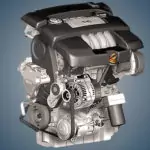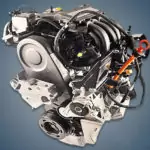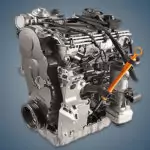The 1.9-liter 8-valve VW BKC 1.9 TDI diesel engine was assembled from 2005 to 2010 and was installed on many popular VAG models, but is primarily known for the Passat B6. Of all the analogues of the BLS and BXE types, this motor appeared first and was produced the longest.
The EA188-1.9 series also includes: AJM, ASZ, AUY, AVB, AVF, AWX, AXB, AXC, BKC, BLS, BXE.
Specifications
| Production years | 2005-2010 |
| Displacement, cc | 1896 |
| Fuel system | unit-injectors |
| Power output, hp | 105 |
| Torque output, Nm | 250 |
| Cylinder block | cast iron R4 |
| Block head | aluminum 8v |
| Cylinder bore, mm | 79.5 |
| Piston stroke, mm | 95.5 |
| Compression ratio | 19.0 |
| Features | SOHC |
| Hydraulic lifters | yes |
| Timing drive | belt |
| Phase regulator | no |
| Turbocharging | VGT |
| Recommended engine oil | 5W-40 |
| Engine oil capacity, liter | 3.8 |
| Fuel type | diesel |
| Euro standards | EURO 3/4 |
| Fuel consumption, L/100 km (for Volkswagen Passat 2005) — city — highway — combined |
7.4 4.3 5.7 |
| Engine lifespan, km | ~320 000 |
The engine was installed on:
- Audi A3 2 (8P) in 2004 – 2009;
- Seat Altea 1 (5P) in 2004 – 2010;
- Seat Leon 2 (1P) in 2005 – 2010;
- Seat Toledo 3 (5P) in 2004 – 2009;
- Skoda Octavia 2 (1Z) in 2004 – 2010;
- Volkswagen Golf 5 (1K) in 2004 – 2008;
- Volkswagen Jetta 5 (1K) in 2005 – 2007;
- Volkswagen Passat B6 (3C) in 2004 – 2008;
- Volkswagen Touran 1 (1T) in 2004 – 2010.
Disadvantages of the VW BKC engine
- These engines have a large margin of safety and breakdowns occur at high mileage.
- Unreliable fastening of unit-injectors with one bolt often results in leaks.
- Thrust dips often occur due to stuck turbocharger geometry.
- Servicemen also refer to the weak points of this diesel engine as a tandem pump.
- From bad oil, camshaft cams and hydraulic lifters wear out quickly.






